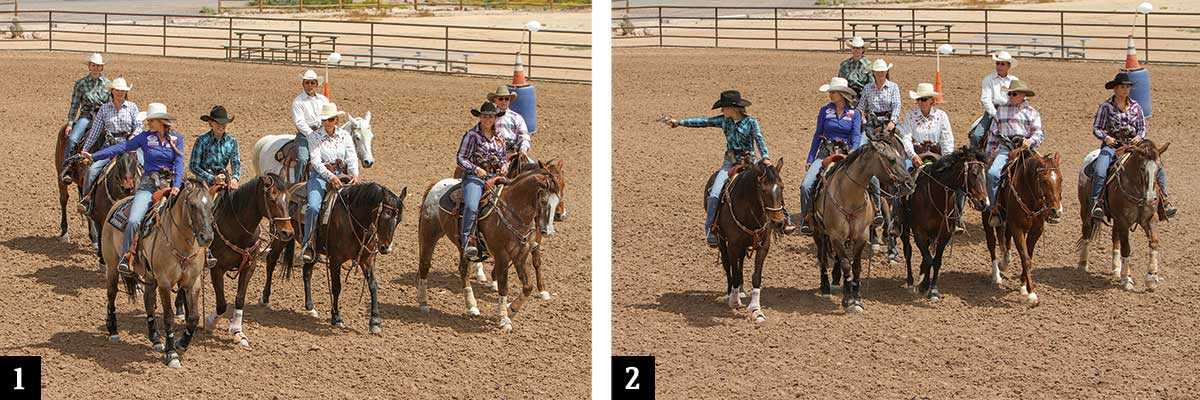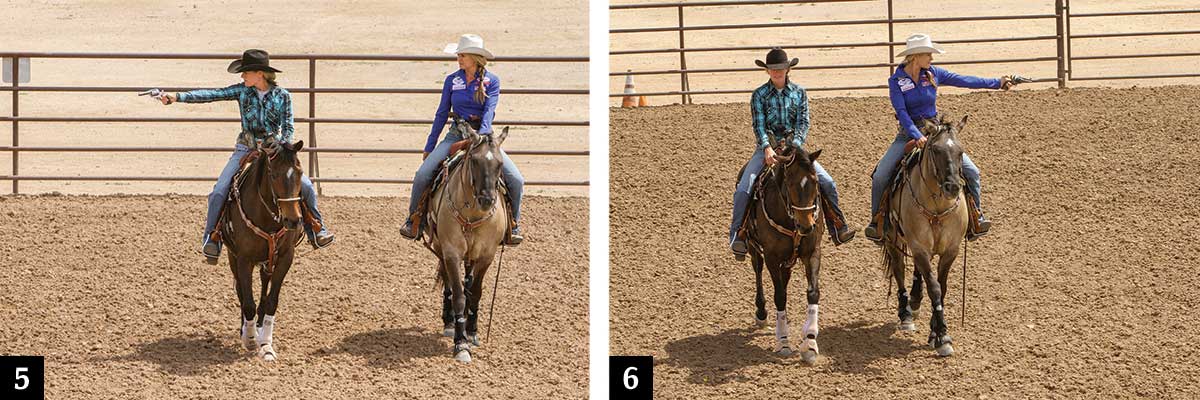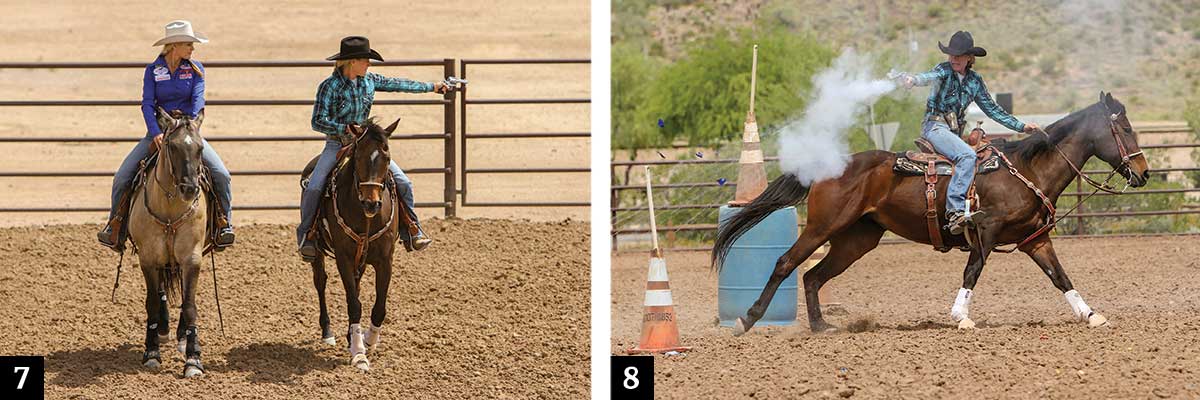But before you can hit the course, you must safely expose your horse to gunfire. World champion gunslinger Kenda Lenseigne explains the steps to help your horse accept the unfamiliar sound of gunshots with the help of a group of experienced horse-and-rider pairs—what Lenseigne calls “the beehive method.”
For the first part of this exercise, enlist a group of four to eight horses to form the beehive that’ll offer confidence and support to your horse. Then work with a single, experienced buddy horse. Use a loop (roping) rein to avoid dropping a split rein when managing your gun. Warm up your horse so he’s responsive and ready to work. Consider inserting equine earplugs to help muffle the sound. This process assumes you can safely handle a firearm one-handed. Use blank ammunition.

One
This entire process builds your horse’s confidence. Because horses are herd animals, the hive of horses offers your mount comfort as he becomes desensitized to the sound of gunfire. Begin with your partner in the shooting position (at the front and to one side of the hive) aboard her seasoned mount, traveling at a walk. Position your horse right next to hers. For safety, the hive horses must stay to the side away from the shooting and behind the lead horse. Your riding partner should shoot out to her right, at her 3 o’clock position, to keep the gun away from her horse’s ears as well as farther from your horse’s head. Your partner should shoot methodically, pulling the trigger in a slow, rhythmic fashion rather than firing off a bunch of shots in a row at once. Keep your body language calm and relaxed and your reins soft to avoid jerking your horse’s face if he startles throughout the process. If he jumps forward or speeds up, quietly settle him before the next shot is fired. Repeat this step until your horse is comfortable.
Two
Next, your horse takes the shooter position, with your buddy and the hive to your left. Every time you prepare to shoot, breathe out, relax your rein, and pull the trigger. If you’re anxious, tight, and forget to breathe, your horse feeds off that negativity. It reinforces his instinct that “something isn’t right here!” Repeat to build your horse’s comfort and confidence.

Three
Change sides. New shooting horses must hear the sound from both sides. By putting the gun in your off hand (left here) instead of crossing over your body, you can stay out at your 9 o’clock to keep the noise behind your horse rather than up by his ears. The process hinges on reading your horse. Apply pressure (increasingly frequent gunfire) to your horse’s threshold, and then back off. Try to push for more progress each time, but don’t go too far too fast, or you risk building fear and anxiety in your mount.
Four
Move from the hive to a buddy pairing. Remember to relax your hands and stay soft with your rein. Your riding partner is on your right, and she should shoot out to her right, at her 3 o’clock position, to keep the gun away from her horse’s ears as well as farther from your horse’s head, just as with the hive.

Five
Switch positions with your partner and her horse. Shoot in the same methodical manner, in your 3 o’clock position. Don’t forget that you’re also responsible for guiding your horse at a steady walk—not just shooting your firearm. Your horse still needs his rider’s guidance.
Six
Let your partner return to the shooter role from your horse’s left side. She should shoot with her left hand rather than reaching across her body to keep the gunfire farther from your horse’s ears.

Seven
And now it’s your turn to shoot to the left, using your left hand. Once your horse is desensitized to the noise, you can shoot across your body, with your right hand, as you would in competition. (Assuming you’re right-handed. Swap this if you’re left-handed.)
Eight
With time and patience, your horse will become accustomed to the noise. Building this solid foundation sets you up for success and fun in the arena as a mounted shooter.
Kenda Lenseigne, Phoenix, Arizona, worked with top cutting horse trainers in Texas and California. But when she tried mounted shooting, she was hooked. She’s the first woman in the history of her sport to win the Overall World Champion title, and continues to lead the pack of competitive shooters. Learn more at kendalenseigne.com.






